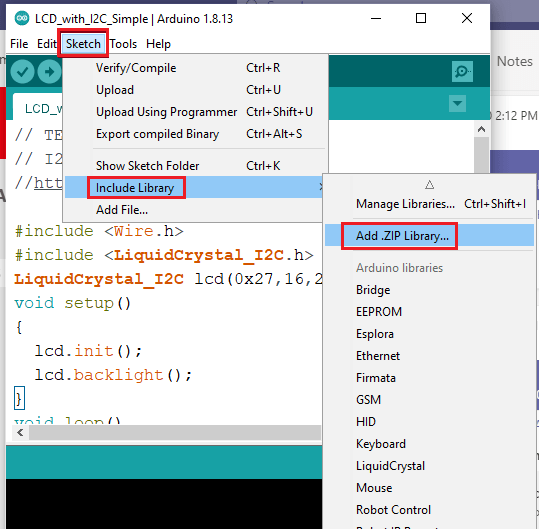

- #Using arduino libraries how to#
- #Using arduino libraries install#
- #Using arduino libraries zip file#
- #Using arduino libraries serial#
And with custom IDC connectors you can connect it to about anything else you want. You can easily place them next to a breadboard, so the breadboard stays free for the rest of the project. The best I can think of is a 2-row IDC connector for all signals. I’ve thought long and hard about connectors for “universal” development boards. The boards: A board for beginners that does not fit on a bredboard, and has some of the pins offset by 0.1″ makes it very inconvenient to make a quick addon board on Veroboard. Please interpret the rant as room for improvement, not as a hate speach.ġ). “Arduino” has a lot going for it, no doubt about that. Posted in Arduino Hacks Tagged arduino, Arduino libraries, sparkfun Post navigation Sometimes it makes sense to port something over instead of starting from scratch. Of course, you also need a great idea for a library or an improved library that doesn’t already exist. If you add their advice to the official style guide, you should be well on your way to creating really great Arduino libraries. For example, the use of default parameters and the order of parameters. However, a lot of the advice is very subtle but important. In the old days, writing terse code might lead to higher efficiency, but with modern compilers, you ought to get a tight final result even when doing things in a pretty verbose fashion. They also suggest making code as readable as possible, which is usually good advice.

#Using arduino libraries serial#
For example, they always use the serial port at 115,200 baud, but they do note that 9,600 baud is also popular. Of course, as you might expect, some of this is a matter of opinion, and admits that. There is an official style guide, but a recent post by from Sparkfun points out lessons learned from writing more libraries than most people.

Writing a great library that everyone can easily use takes a little forethought. On the other hand, it is also an ecosystem in which many different boards and libraries can be supported. On the one hand, it is a simple environment where you can just pick and choose a few libraries, write a few lines of code, and make lots of interesting things. In the menu bar, select Sketch > Include Library.The Arduino IDE has a bit of a split personality.Copy this entire folder (named 'MPR121' in our example) into the Arduino's libraries folder.Inside the archive you should find a folder bearing the name of the library – for example 'MPR121'.Unzip the library archive that you wish to install.If not found, create a new folder with that name (must be lowercase). Locate the Arduino folder inside your Documents directory.This is the original method of adding libraries.
#Using arduino libraries install#
You will be notified if the installation has been successful – otherwise you'll need to install manually.
#Using arduino libraries zip file#
Use the file dialog to locate and select the zip file from your Downloads folder. Similar to the Library Manager, this option is in the menu bar: Sometimes the library will download as a *.zip archive, which can sometimes be installed directly without restarting the Arduino IDE. Locate and download a library you wish to use. You will often have to manually download and install a library, following the other two processes. Only a few libraries are currently available this way, as this feature is relatively new. You can access the Library Manager from the menu bar:įrom here you can search for libraries to use in your code. The simplest method of installing libraries is using the Library Manager built into the Arduino IDE. There are three different ways to install libraries we'll show you each of them. The library developer usually provides online documentation and explains how it possibly relates to what you are trying to achieve.
#Using arduino libraries how to#
Libraries typically come with examples of how to use them. Arduino libraries are collections of code that are designed to provide additional, reusable functionality or to simplify using external electronic modules.


 0 kommentar(er)
0 kommentar(er)
